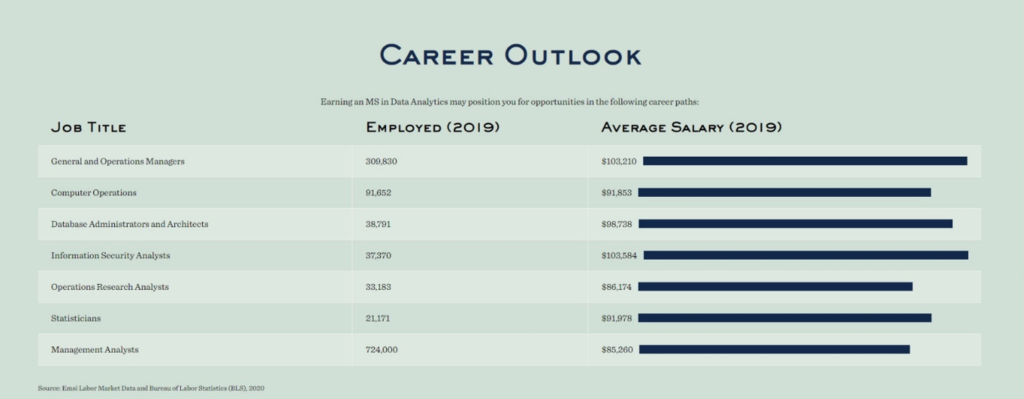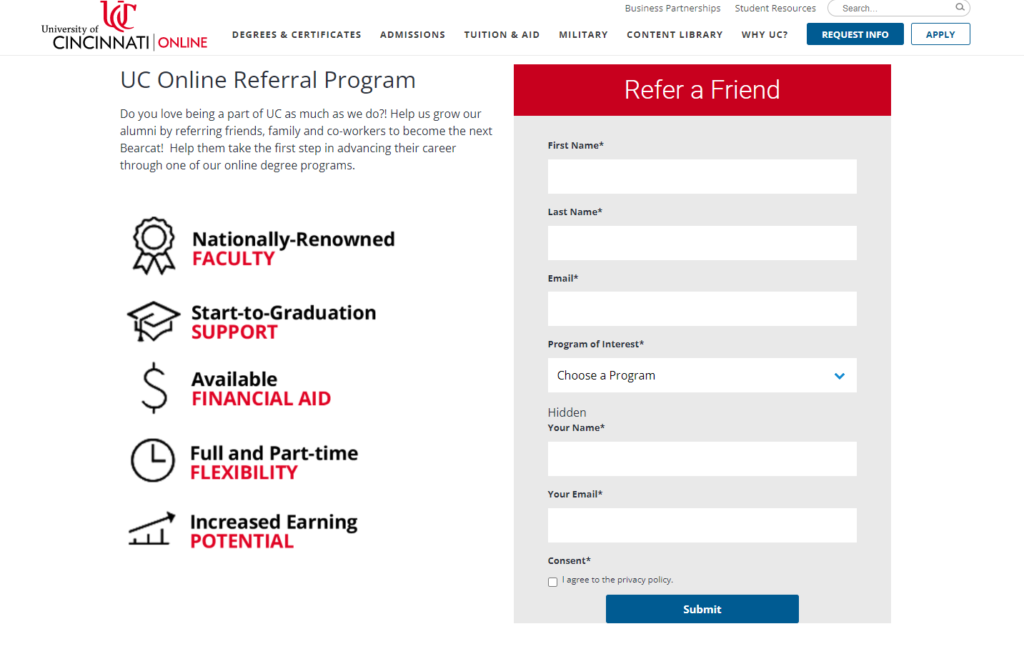Here’s how to show students your master’s program is worth it
Much has been made in the media about the financial burden students can assume when completing a master’s degree. But EAB’s new analysis of all master’s programs—not just those offered at the most selective institutions—indicates more master’s programs “pass” the debt-to-income ratio test than expected. Even still, it’s important to showcase the professional and personal value your master’s programs provide to students at every stage in their journey to enrollment.
Here are a few best practices to convey your program’s value—and empower students to enroll with the confidence that your program can help them achieve their professional goals.
1. Experiment with new ways to convey program outcomes
Feature specific career outcomes on your program webpage and in other marketing materials to help prospective students conceptualize your program’s returns on investment. Your program webpage should include concrete examples of graduates’ employers and potential salaries (based on an analysis of job postings and employment data) to address students’ questions about how the program may further their careers. These data points will also help assuage concerns among students concerned about how they can eventually pay off debt incurred throughout the program. To strengthen the interpersonal value of these examples, incorporate testimonials (both text and video) detailing alumni success stories. The example from Butler University below illustrates one way you can convey your program’s outcomes to prospective students.

2. Develop shareable content for current students and alumni to encourage word-of-mouth marketing
Similar to alumni testimonials, word-of-mouth marketing provides social proof to prospective students about how your program provides a return on investment. Content such as downloadable brochures makes it easy for current students or alumni to share details about your program with their friends and family. When current students or alumni share marketing content, especially when they can personalize the message to the prospective student, recipients gain valuable insight into your program and can more easily envision themselves enrolling and succeeding in your program. And hearing about your program’s value from a trusted source can make all the difference.
USING DRIP CAMPAIGNS TO RECRUIT GRADUATE STUDENTS? HERE’S WHAT YOU’RE MISSING.
The University of Cincinnati offers a “refer a friend” webpage with talking points current students and alumni can use when discussing the program with a friend or family member. The page also features a form where students and program graduates can input the contact information for a peer who wants to learn more.

3. Incorporate experiential learning into your program so students graduate with marketable skills for employment
Experiential learning, like an internship or practicum, provides students with hands-on experiences during your program. While all students benefit from these opportunities, experiential learning can be especially important and appealing to prospective students with minimal prior work experience. Whether your students are recent undergraduates or adult learners well into their careers, showcase experiential learning opportunities prominently to convey your program’s ability to deliver meaningful career impacts.
These techniques can help your program contribute to solving the “predatory” master’s degree problem and ensure prospective students can see the ways your program fulfills its promise for a return on education.
More Blogs

Adult learners: who they are and what they want from college

4 questions domestic students will ask before applying to your graduate program
